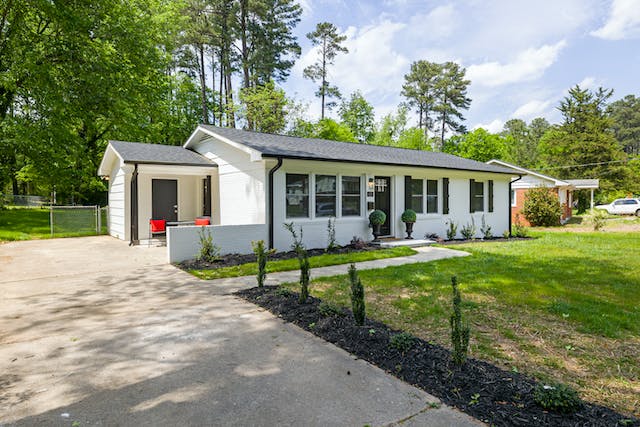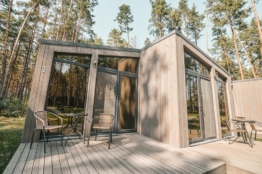Table of content
KEY TAKEWAYS
- California’s ADU owner occupancy requirements have recently changed so that, as of January 2024, there can be no owner-occupier requirements for renting ADUs.
- The updated legislation is intended to tackle some of the issues that have been common barriers to ADU permits in California.
- It is hoped this will attract property developers and investors to help tackle the housing shortages in the state.
- We are a team of real estate experts and we can help you with planning, getting permits, building, and selling/renting ADUs in Contra Costa County.
What Are California’s ADU Owner Occupancy Laws?
In 2022, a statewide law changed ADU owner occupancy requirements in California so that ADUs built before 2020 or after 2025 would not be subject to owner-occupancy requirements. Now, Assembly Bill 976 has been passed, meaning that owner-occupancy requirements are prohibited for all ADUs in California. This comes into effect from January 1, 2024.
This legislative change is sure to make a big difference to the housing market in Contra Costa and beyond. Homeowners and renters will have greater freedoms, in the hope that this will help address the growing housing shortage problem.

No More Owner-Occupancy Requirements For ADUs In California? Analyzing The Changes
The requirement to be an owner-occupier of the main residence on which an ADU would be constructed was once a common barrier to getting ADU permits. From 2022, there was a temporary removal of this requirement, and its popularity has led to the recent change.
Local authorities are now prohibited from imposing owner-occupier requirements in relation to ADU construction. This means that, if you have a rental property, you can now build an ADU on the same lot and rent it out, thus boosting your income and providing more housing for residents.
What Are Contra Costa’s ADU Owner Occupancy Laws?
Contra Costa’s ADU owner occupancy laws are in line with the wider state laws. This means that there are no longer any owner occupier requirements for ADUs in the county as of January 2024. If you want to sell or rent an ADU in Contra Costa, you need the help of a team of local real estate professionals to help navigate the California ADU owner-occupancy requirements. Come to us for assistance.
Investors And ADU Owner Occupancy Requirements
Property investors and developers are important in the California real estate market. With a shortage of affordable housing options, investors are key to addressing the housing crisis by providing homes to rent and buy where they are needed.
The relaxing of owner occupancy requirements will be an incentive for investors to help with property development here, but they will need a strong understanding of ADU owner occupancy requirements and other ADU legislation in the state.
The Role Of Investors In The ADU Market
For investors and developers, ADUs are an opportunity to increase their returns by adding additional housing on existing lots. But owner occupier requirements have been a barrier to investment, since existing rental properties were not eligible for ADU permits. The new change is likely to provide an incentive for investors to buy properties and build ADUs on the lots to increase their rental income.
This could have a huge impact on local housing markets, providing more affordable rental opportunities for tenants. And new legislation that enables owners to sell new ADUs as condos will further increase the appeal of California real estate for investors.
Ab-976 (Ting) And Its Impact On Investment Strategies
AB 976 is the new Assembly Bill that extends the ability of property owners to build affordable rental ADUs. It builds on the success of AB 881, which was due to expire in 2025, making permanent provisions for property owners to build rental ADUs on the same property as existing rentals.
This legislation will not make much difference to homeowners on their own properties. But investors and property developers will now have a new opportunity to increase their ROI by providing additional rental properties on the same lots as their existing ones.
What Are California’s Occupancy Requirements With Junior Accessory Dwelling Units (JADUs)?
Though the new legislation eliminates owner occupancy requirements for building rental ADUs on existing rental properties, it does not extend to JADUs. Junior Accessory Dwelling Unit (JADU) owner occupancy requirements still apply, meaning a natural person with legal or equitable title to the property must reside on the property, either in the primary dwelling or the JADU.
There have been some changes to legislation around JADUs, including size restrictions and sprinkler requirements. But owner occupier requirements remain and that is unlikely to change due to the nature of JADUs.
Distinguishing JADUs From Standard ADUs
Accessory dwelling units (ADUs) and junior accessory dwelling units (JADUs) are legally and functionally distinct from one another. Here are the key things you need to know:
- ADUs: These are separate, complete swelling units with their own kitchen and bathroom facilities. They offer full independence for the resident(s).
- JADUs: These are smaller, created within the primary dwelling, usually with shared bathroom and/or kitchen facilities. They are compact, integrated living spaces.
It’s important to understand these legal and characteristic differences if you want to navigate California ADU owner occupancy requirements.
Specific Occupancy Requirements For JADUs
The owner occupancy requirements for JADUs in California are quite simple. In a nutshell, the property owner is required to live on the premises. They can live in the main dwelling or the JADU, but they must live on-site. The property that they do not live in can be rented out, but only if the occupier remains resident in the building.
This is a more restrictive situation than the new rules for ADUs. But it still opens the door for greater flexibility for people to make use of JADUs however they see fit.
Economic Implications: Are Owner-Occupancy Requirements Driving Up Housing Costs In California?
Before the relaxing of ADU owner occupancy requirements in California, there was certainly an argument that the restrictions were having an impact on housing costs. While ADUs were still providing more rental opportunities, the lack of flexibility may have impacted property valuations.
Ultimately, housing prices are a complex and dynamic variable, with many factors that impact them, including minimum wage and other economic conditions. It is important to monitor market trends, and this is something that we do at all times.
Assessing The Impact On Housing Market Prices
The new California ADU owner occupancy requirements are likely to have an impact on housing costs. As real estate experts in Contra Costa County, we expect to see an increase in the number of available ADUs for rental now that restrictions have been eased. With more supply to meet demand, we typically see rental prices come down, which would be good news for affordable living in California.
Of course, there are other factors that have an impact on this. But the forecast is looking promising for improvements in the rental market in California.
Debunking Myths: Owner Occupancy Not Required To Build Dwelling Units?
There was a common myth that owner occupancy was always required for ADUs in the past in California, but this was not always the case. From January 1, 2024, owner occupancy will not be required at all for renting ADUs. Another common myth is that there are restrictions on family use, but ADUs can be rented to family members as long as there are actual legal contracts in place. And some believe that rented or purchased ADUs are not subject to their own property tax requirements, but this is not true.
Legal misconceptions around ADU construction are another common issue, so let’s look a little closer at them.
Clarifying Legal Misconceptions
There is a misunderstanding that there are complex and prohibitive permitting requirements when it comes to building and renting ADUs. Whilst this may have been true in the past, it is now much simpler to secure a permit and use your ADU as you see fit.
Another common misunderstanding is that there are restrictions on renting and selling ADUs you own. Again, this used to be true, but recent legislative changes provide a lot more flexibility for ADU owners.
It is important to seek professional guidance on these things. Contact us for expert real estate advice in Contra Costa County, or get in touch with your local planning department for up-to-date information.

Alternatives To Owner-Occupancy Requirements: Seeking Solutions
Whilst California ADU owner occupancy issues have been addressed by removing the requirement altogether, some states have taken different approaches to address owner occupancy requirements. Let’s explore some of the innovative solutions from other states that aim to promote flexibility and accessibility when it comes to renting out ADUs.
Innovative Approaches To Housing Laws
We have seen some creative alternatives to owner occupancy requirements to encourage ADU development across the USA. Some approaches include:
- Lease length requirements: Instead of enforcing owner occupancy, some jurisdictions force property owners to commit to longer-term leases to prompt stable occupancy.
- Affordable housing partnerships: Collaborations with affordable housing organizations enable ADUs to contribute to affordable housing stock.
- Conditional use permits: These can be granted on factors like property management plans to ensure responsible ADU management without owner occupancy.
- Neighborhood stewardship programs: Placing ADUs under neighborhood stewardship encourages responsible ADU management and can even foster improved community ties.
We have observed recent changes in many cities and states, including Portland, Oregon, Minneapolis, Minnesota, and Seattle, Washington. Shifts towards alternatives to ADU owner occupancy requirements reflect a need for flexible regulations balancing housing needs and community concerns.
Homeowners Association Restrictions: Overruled By State Laws?
If homeowners associations place restrictions that require owner occupancy for renting ADUs, it is very likely that the new state laws overrule those requirements. There is a strong possibility that this will lead to conflict and there may be legal challenges by HOAs looking to preserve the character of communities and neighborhoods.
The covenants, conditions, and restrictions imposed by HOAs that operate in communities must be followed by residents. But HOAs cannot overrule state law, and this is important to know for homeowners and developers alike.
Navigating Conflicts Between Hoas And State Legislation
If a HOA places restrictions on owner occupancy for ADUs, it may struggle to continue doing so once the new laws take effect. There are likely to be challenges between:
- HOAs and the state
- Landlords and HOAs
All have different goals, and all must find the right balance to serve everyone.
If you want to take advantage of the easing of ADU owner occupancy requirements in California, but an HOA attempts to block you from doing so, seek legal advice. HOA-governed areas are not exempt from state law, so there may be scope to challenge the rules of the HOA.
What Defines ‘Owner-Occupied’? Understanding The Legalities
The term ‘owner-occupied’ is important to understand when considering the California ADU owner occupancy requirements. It is the fundamental question of this article, and there are legal definitions of what constitutes an owner-occupied building. With the relaxing of owner occupation rules for ADUs, it is less crucial now to understand it, but it is helpful to be informed of these things if you are looking to build an ADU in California.

Legal Definition And Implications
In California, the legal definition of owner occupied comes down to a simple explanation: the owner of the property lives on the property as their main residence. With ADUs, this can mean that they live in the ADU or that they live in the main residence. In either case, the dwellings on the lot that they don’t live in can be rented to tenants. These were the rules before the recent legislation changes.
It’s important to note that there are certain exemptions where owner-occupier requirements are relaxed. These may occur in circumstances where the owner:
- Is absent due to work reasons.
- Has to leave temporarily for educational purposes.
- Is away on military service.
- Has to temporarily vacate the property for health reasons.
In any case, with the relaxing of owner occupancy requirements for ADUs in California, these definitions are not overly important.
Frequently Asked Questions
What Are The Owner Occupancy Requirements For Accessory Dwelling Units (ADUs)?
As of January 1, 2024, ADUs can be rented to tenants on any lot you own, regardless of whether you are an owner-occupier on the lot.
Do All ADUs Have Owner Occupancy Requirements?
These requirements are a statewide mandate in California, so local governments must permit owners of ADUs to rent to tenants, even if they don’t live on the property. There may be some exceptions, so check with local authorities and homeowner associations.


































































